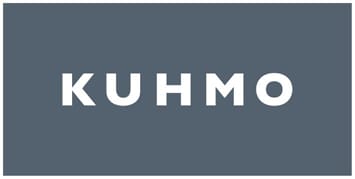
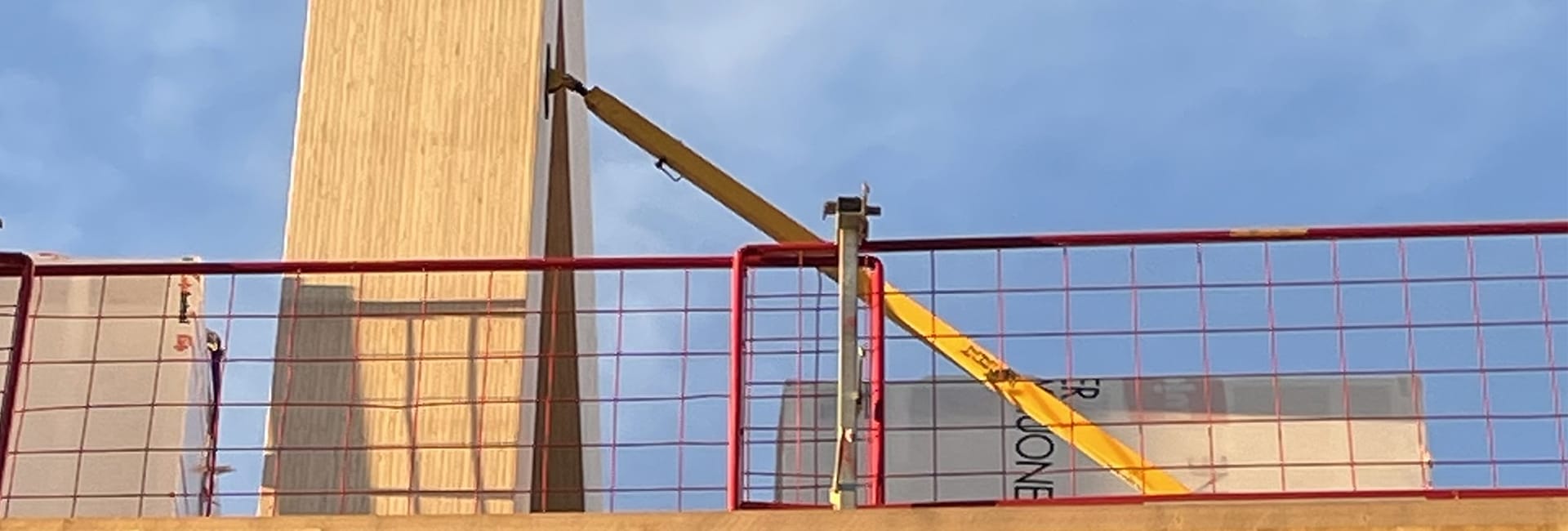
Eastern Finland Wood Product Cluster (ITÄPUU)
The aim is to strengthen the cooperation and networking of wood industry operators to promote industrial wood construction in Eastern Finland.
New opportunities in the development of industrial wood construction
Diverse network of cooperation among wood product operators in eastern Finland as a key factor
In Finland, the construction industry lacks standardisation of wood components and joints. Therefore, modelling is slow and tendering is difficult. The project promotes cooperation between wood construction industry actors across the country by developing, modelling and illustrating wood construction solutions to improve their standardisation.
Promoting industrial wood construction and raising the degree of wood processing as a priority
The Xamk sub-project focuses on product development, testing and standardisation activation of jointing and structural solutions for wood-hybrid construction between RDI actors and SMEs.
Key actions of the project
WP 1. Eastern Finland wood product cluster network organising and cooperation
WP 2. Promoting industrial wood construction and raising the degree of wood processing
WP 3. Promoting export of industrial wood construction
WP 4. Communication, dissemination and exploitation
.
.
News
ITÄPUU Project launched in the spirit of a company opening party
Xamk’s Industrial Wood Construction Laboratory’s company opening ceremony was held on Friday 24.5.2024 in Savonlinna, Finland. The event was attended by over a hundred experts and company representatives, and the weather was beautiful. The sun was shining from a clear sky all day, and at lunchtime the local vendace of Puruvesi with side dishes tasted great outside. The company presentations and demonstrations and the new research equipment in the laboratory generated a lot of enthusiasm and new discussions among the participants.
This festive atmosphere also helped to kick-start the Itäpuu project with a first meeting of project actors on site, which was attended by a large number of project actors. The main implementer of the project from Kuhmo and the co-implementers, the Measurement Unit of the University of Oulu in Kajaani, the Natural Resources Institute of Finland in Joensuu and Savonlinna and the South-Eastern Finland University of Applied Sciences in Savonlinna were present. Discussions and exchanges of ideas were actively taking place on the content and objectives of the project, while at the same time meeting companies and designers in the wood sector. As a result, the wood products cluster in Eastern Finland continues to move forward.
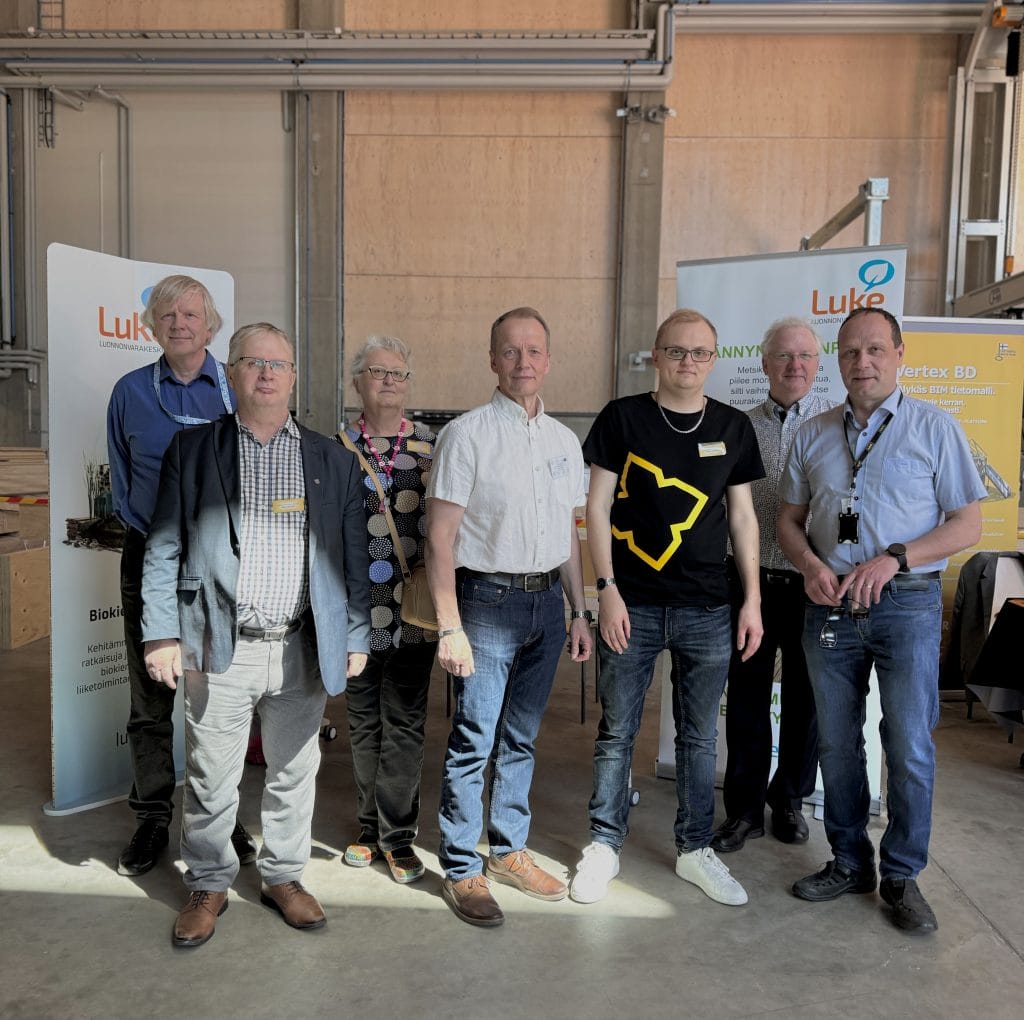
Trip to Kuhmo Woodpolis: business visits and a project workshop with ITÄPUU Project operators 27 – 28.8.2024
ITÄPUU Project operators gathered in Kuhmo Woodpolis on 27-28 August 2024. During these two days, the experts of the project visited companies in the wood products industry in the region, discussing aspects of operations, networking and further development, and organised the first project workshop, where they structured common objectives and measures through presentations of the work package contents prepared by the implementers.
On the first day, company visits were carried out to Luottopuu, Oy Crosslam Kuhmo Ltd, Kuhmo AA-Puu Oy, and Oy Timber Frame Ltd. The company visits were also accompanied by Japanese and Nordic export experts from Masame Mokuzai Finland Oy, who have been proactive towards the ITÄPUU Project. During the visits, the companies’ activities were familiarised and trends in industrial timber construction were openly discussed. With the export experts, ideas were raised on export conceptualisation in relation to the company’s sales lines, where the company specialises in structural timber joinery products and small, mobile, and stationary residential and accommodation buildings. Finally, at a summary event of the visits, we heard the views of the local Design and construction service JK Oy on CLT module construction for detached houses, which could also be a boost for the latter export line.
The visits were successful, and the discussions were fruitful, even though the schedule was tight. Overall, the companies in the region have a strong network of cooperation and development, aiming to promote wood processing and business growth based on industrial wood construction. A good example of this during the company visit was the ProLog® CLT log product, which is a non-compressible log product that has been the result of innovation and development by Crosslam and Timber Frame in recent years, and which we were able to view and feel on site. At the end of the day, we visited the Lentua Hall in Kuhmo House, where a total of 60 kilometres of Kainuu timber is on display in the surface structures of the concert hall. These experiences were a good conclusion to the day of the visit.
On the second day, an intensive and effective 1st Project Workshop was held among the ITÄPUU Project operators, where they delved into the driving of common objectives and action lines, drawing on the competence profiles of the implementing organisations. Jointly prepared follow-up measures were written down, which will serve as a basis for the further development of the ITÄPUU Project in line to achieve its practical objectives.
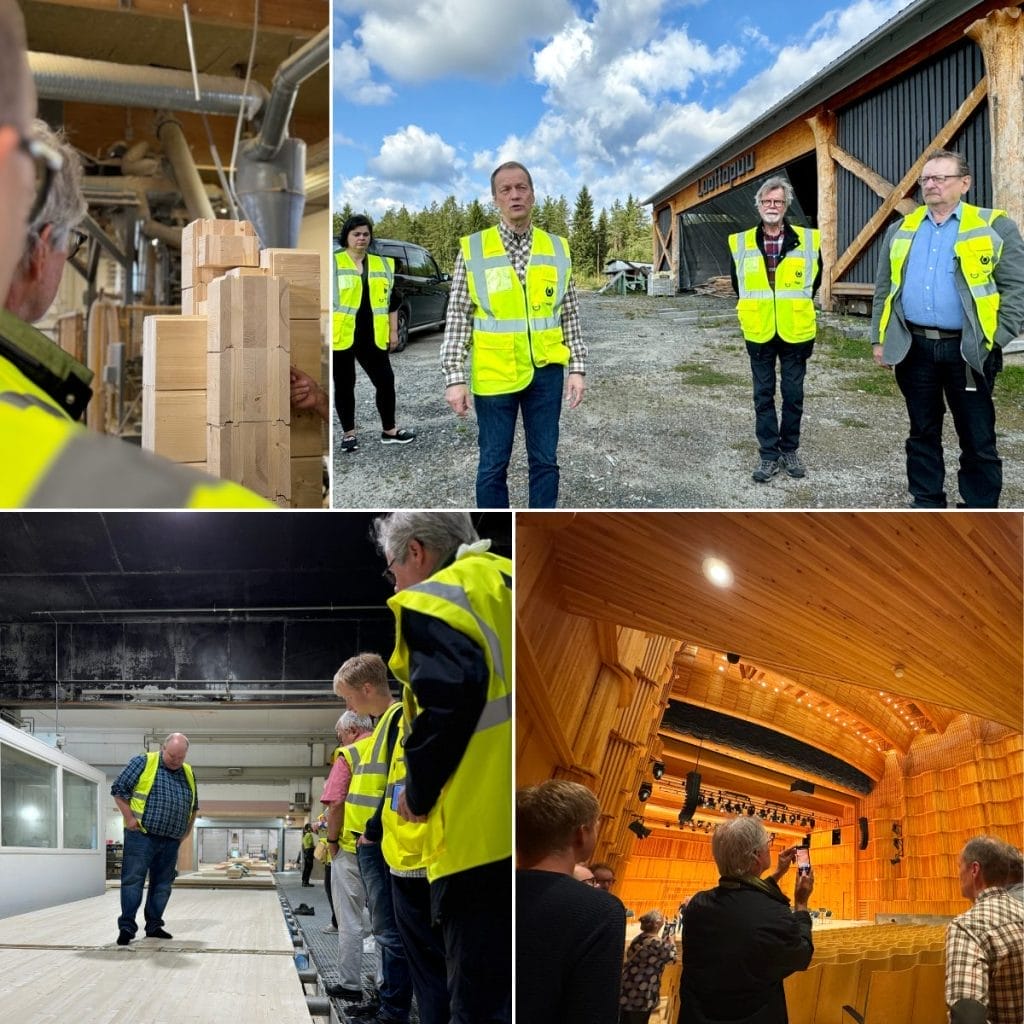
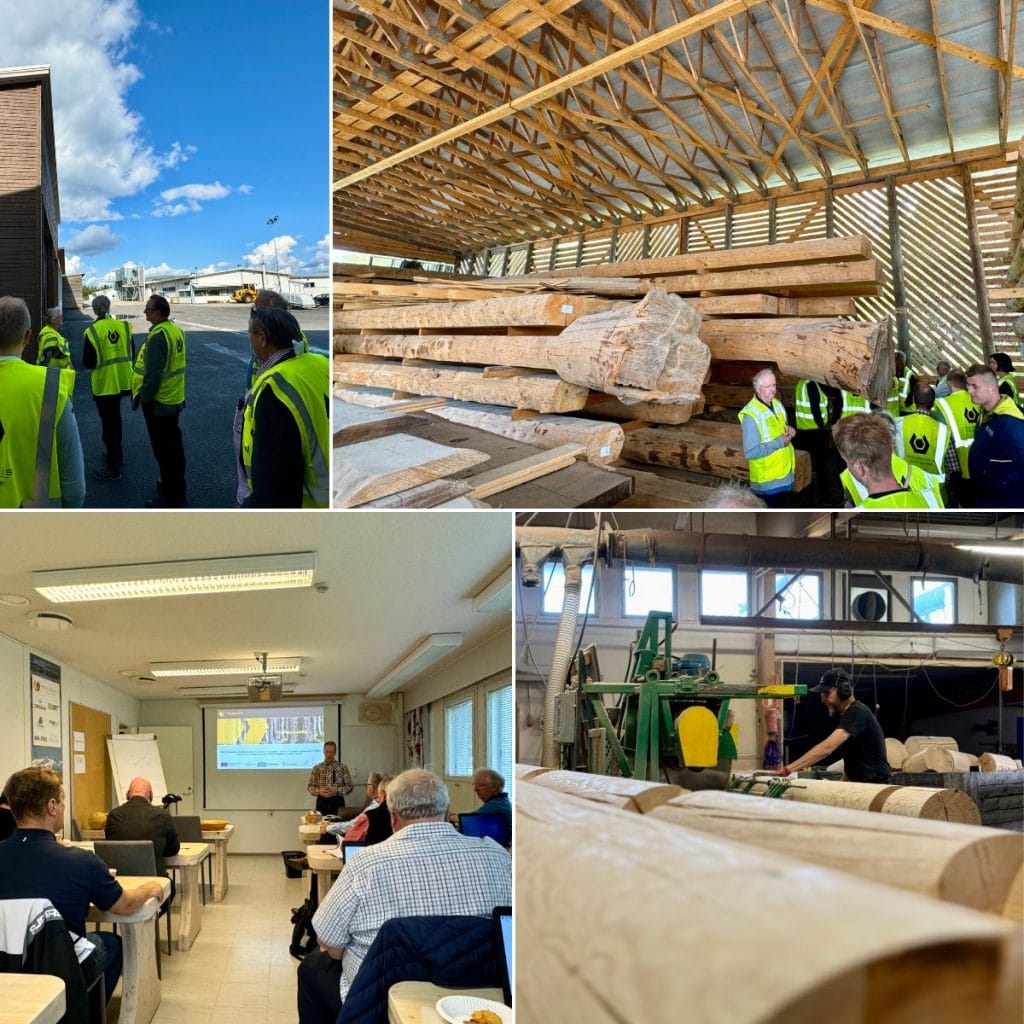
Promotion of Joint and Structural Solutions in Timber-Hybrid Construction
The Eastern Finland Wood Product Cluster project focuses on advancing industrial timber construction and increasing the degree of wood processing. The development of timber structures will lead to an increase in the use of wood in public and large-scale construction projects.
The project implements innovative case studies on internationally competitive timber construction solutions from the Eastern Finland region. Additionally, it promotes design guidelines and standardization for structural joints and elements that are important for Eastern Finland. Modular and standardized solutions aim to significantly enhance timber construction efficiency and are also a prerequisite for increasing timber construction exports. These measures seek to improve, simplify, and clarify the usability, cost-efficiency, and quality of timber construction solutions in large-scale building projects.
Several wood product industry companies have been involved in the development work, contributing to the creation of visual materials for the solutions under development. The research topics and test plans for the case studies have been developed in collaboration with Insinööritoimisto Lahtela Oy, the competitively selected structural testing consultant.
Case Study Topics:
AIRBORNE SOUND INSULATION OF A CLT-STRUCTURED DOOR LEAF IN FLAT ENTRANCE DOOR IN APARTMENT BUILDINGS
DEVELOPMENT OF A RADIAL-SURFACED HYBRID PANEL
DEVELOPMENT OF A CLT LINTELN BEAM INTO ELEMENT OPENINGS
In addition to case studies, standardization of structural joints and solutions, as well as the promotion of exports, have been improved through the adaptable CLT modular demonstration house concept. The key competitively selected partner in this collaboration has been Suunnittelu- ja Rakennuspalvelu JK Oy. The technical drawings (permit drawings), as well as conceptual 3D element joint and structural models for CLT modular construction standardization, have already been completed, along with a summary report. Additionally, a joint marketing package has been prepared to support domestic and export promotion efforts, highlighting the strengths of the Eastern Finland region and the cluster network. The marketing materials have been developed in collaboration with HaukiMedia Oy, the selected marketing agency.
Communication events share project results, highlight critical issues, present new timber construction solutions, and outline concrete actions to support the establishment of the wood product cluster.


CASE STUDY 1:
AIRBORNE SOUND INSULATION OF A CLT-STRUCTURED DOOR LEAF IN FLAT ENTRANCE DOOR IN APARTMENT BUILDINGS
This project examines the airborne sound insulation of a CLT-structured door leaf, aiming to determine the structural conditions under which this type of door leaf could be used as a flat entrance door in apartment buildings. These doors must meet a minimum sound insulation level of 39 dB (DnT,w), which can be achieved through laboratory measurements or modeling methods with an airborne sound insulation value of 37 dB (Rw). Additionally, the study assesses their suitability for use in partition walls and interior doors.
The airborne sound insulation of the CLT door leaf structure has been analyzed using computational modeling, which has now yielded practical results. The goal of the calculations was to identify optimal and high-quality product development solutions, where the appropriate use of building materials contributes to sustainable energy and material efficiency. The study considered factors such as structural thickness, cost-effective manufacturability, and market competitiveness, which manufacturers can utilize in their own product development processes.
The computational results indicate that increasing the mass of the door leaf provides only limited benefits if a flexible layer within the structure does not function as intended. This suggests that a flexible layer could be a promising solution from a sound insulation perspective. Many soundproof doors on the market already consist of layered panels and flexible materials.
The study included various material combinations in addition to the CLT structure, such as: birch-plywood-faced soundproof panels, heavy rubber mats, MDF boards and fiber gypsum boards. These materials were tested in different configurations to determine their effect on sound insulation performance.


CASE STUDY 2:
DEVELOPMENT OF A RADIAL-SURFACED HYBRID PANEL
The project investigates an innovative hybrid cladding panel produced by combining a thin radially sawn plank with a thin normal plank manufactured using Nordic sawing practices. The aim is to determine the benefits of this product solution compared to existing wooden cladding panels, with a particular focus on deformations caused by moisture variations.
Prototype plan for the hybrid panels have been developed so far, that forms the basis for an initial moisture behavior test. This test will reveal the types of deformations that occur in the panels due to moisture fluctuations (e.g., warping, cupping, and edgewise distortion) and whether the panel solution offers significantly better weather resistance than existing options. Additionally, the manufacturability and cost competitiveness of the product solution can be assessed.
The research utilizes the equipment and expertise of the industrial wood construction laboratory at Xamk in Savonlinna, along with the support of project partners.






CASE STUDY 3:
DEVELOPMENT OF A CLT LINTELN BEAM INTO ELEMENT OPENINGS
The project explores the development of a CLT (cross-laminated timber) lintel beam by utilizing stronger structural lumber grades. In CLT wall elements, the beams spanning openings often become the limiting factor, requiring replacement with alternative beam solutions such as glued laminated timber (glulam). However, this is not always an ideal solution from either a structural or visual standpoint.
The study aims to determine whether significantly higher load-bearing capacity can be achieved by using C35 structural lumber in a design where CLT panel lamellas are currently made exclusively from C24 lumber.
The production of the CLT beam solution must be designed so that the longitudinal lamellas are larger in both dimension and strength, as they will bear the applied loads, while the intermediate lamellas ensure dimensional stability. Currently, there are no standardized Eurocode design rules for holes or notches in CLT beams. However, the beam’s strength can be theoretically calculated and validated through testing, ensuring the reliability of the CLT beam’s performance values.




Standardization of Joint and Structural Solutions & Promotion of Export
Modular CLT Demonstration House with Accommodation Solutions
The project aims to advance the development, competitiveness, and implementation of industrial wood construction by leveraging the expertise of the Eastern Finland wood product cluster. It has produced materials on the development of joint methods, modularity, and conceptualization in CLT products, contributing to the standardization of the industry.

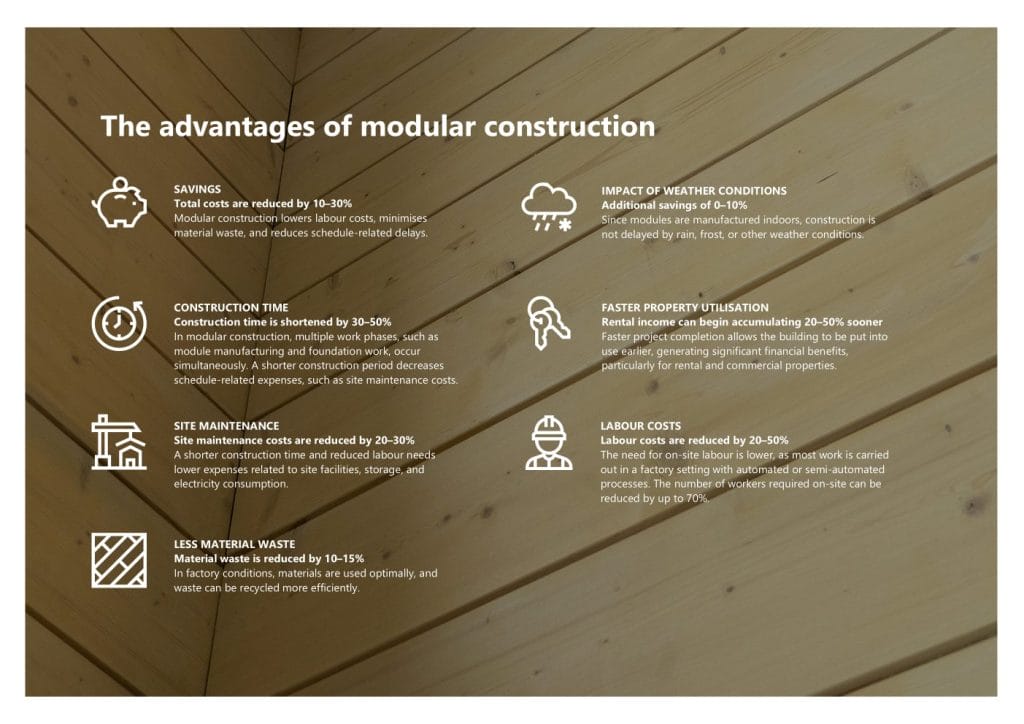
Creation of Domestic and Export Marketing Materials
The key objective is to align the expertise of Eastern Finland with customer needs both domestically and in exports. To achieve this, a professionally designed visual marketing package was created to capture customer interest in the region, its products, and companies.
The marketing material consists of three main parts:
- General introduction to Eastern Finland and the project stakeholders’ areas of responsibility
- DEMO product family, including architectural-level materials on CLT demonstration house modules
- Cluster company presentations
The complete material package enhances the recognition, appeal, and commercial potential of industrial wood construction, related building components/modules, and the companies involved.
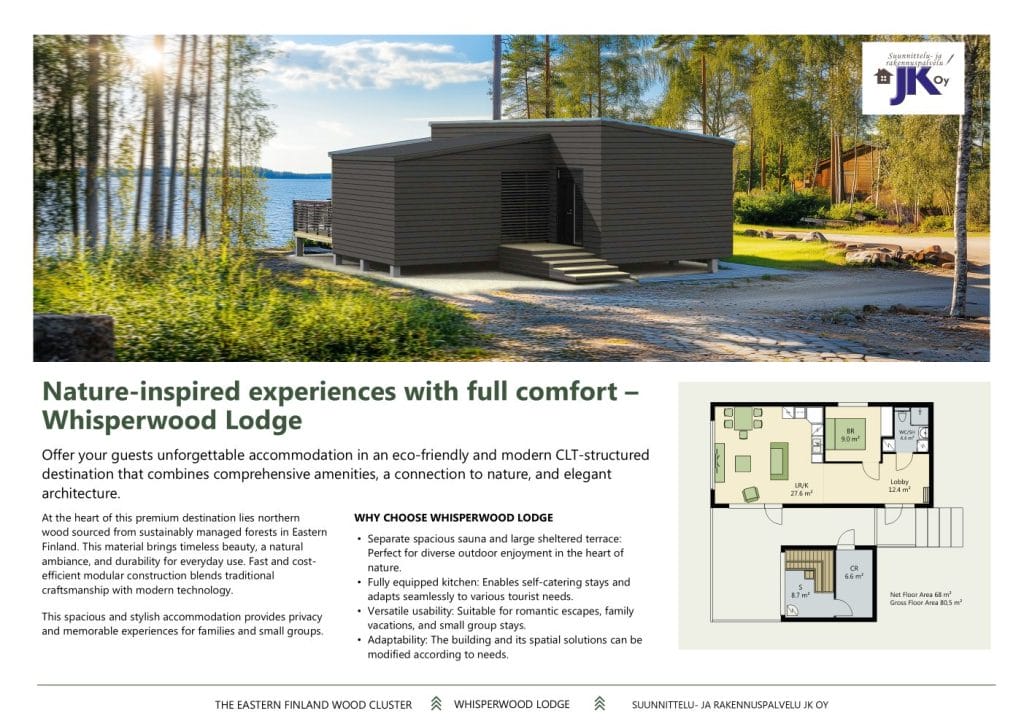
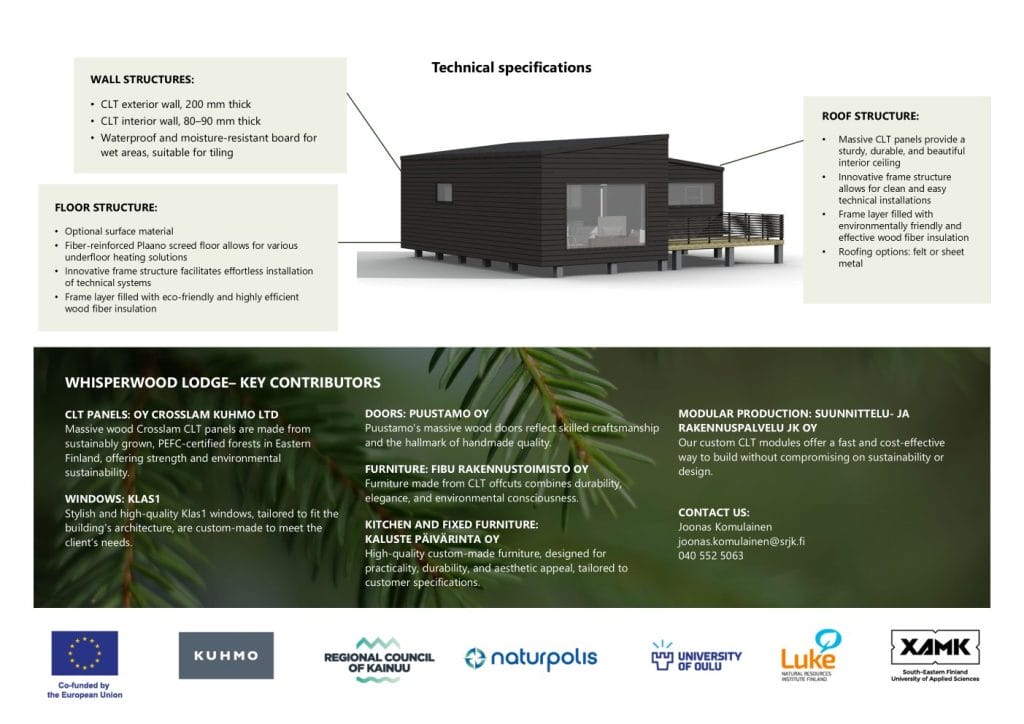
More information
Facts
Itäpuu – Eastern Finland wood product cluster
Info
Budget
Eastern Finland Wood Product Cluster project is co-funded by the European Union, granted by the Regional Council of Kainuu. Xamk’s part of the total budget is € 149 728 €, from which the amount of EU funding is € 119 782.
The City of Savonlinna is committed to long-term funding of development projects related to wood construction by Xamk and LUKE. However, the project funding decision is still pending. City of Savonlinna’s share of municipal funding: € 14 973
Keywords
Project partners

